I want to automatically scale the vertical height of subplots for shared x-axis figures based on their data span! I want to compare the relative intensity of the displayed data. If i use the sharey=True kwarg for the subbplots the data is displayed in a way that the relative intensity is recognizable:
import matplotlib.pyplot as plt
from matplotlib import gridspec
import numpy as np
SIZE = (12, 8) #desired overall figure size
# Simple data to display in various forms
x = np.linspace(0, 2 * np.pi, 400)
y = np.sin(x ** 2)
y2 = 2*(np.sin(x ** 2))
y3 = 3*(np.sin(x ** 2))
fig, ax = plt.subplots(3,ncols=1, sharex=True, sharey=True)
fig.set_size_inches(SIZE[1], SIZE[0])
fig.subplots_adjust(hspace=0.001)
ax[0].plot(x, y)
ax[1].plot(x, y2)
ax[2].plot(x, y3)
plt.show()
All subplots have the same height now and the data span in the y-Axis is recognizable as the data is displayed with the correct relative proportion. What i would like to achieve is that the scales of each plot end where the data ends. Essentially eliminating the not used white space. The size of the subplot would than represent the relative height ratios of the data. They should still have the same scaling on the Y axis in order for the viewer to estimate the relative data height ( which cold be a countrate for example).
I found the following links to similar problems but none really helped me to solve my issue:
